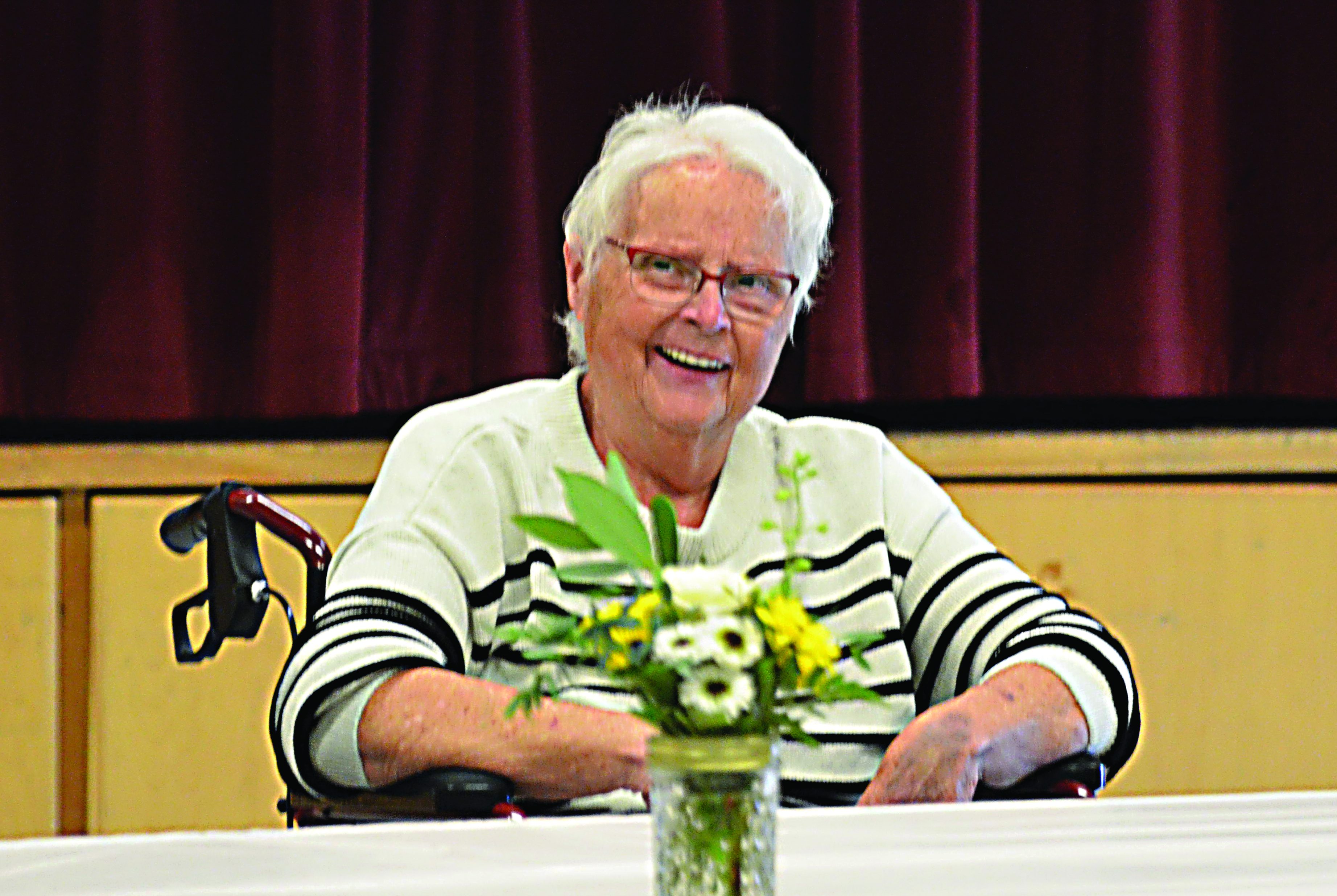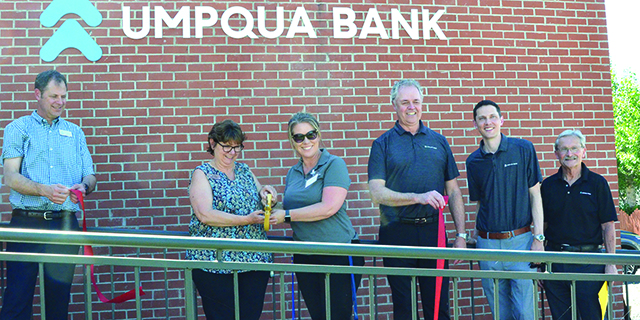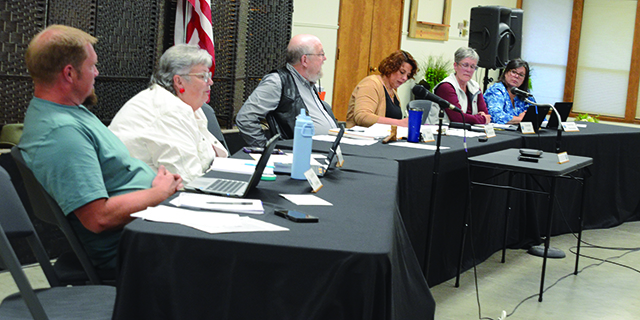Opponents to Greater Idaho speak out
Published 4:00 pm Thursday, August 29, 2024

- The public on Aug. 28, 2024, packs the Thornton Conference Room at the Wallowa County Courthouse for the third public meeting to consider Wallowa County's best interests in moving the state line to make the county part Idaho. The county board of commissioners holds its next meeting on the topic on Feb. 26. 2025, also at the Thornton Conference Room.
ENTERPRISE — Two meetings to discuss moving Oregon’s border to make Wallowa County a part of Idaho took place in Enterprise within 14 hours of each other this week, and both largely featured opponents of the idea.
The first meeting, held Tuesday, Aug. 27 at Cloverleaf Hall in Enterprise, was organized by the Greater Idaho movement, but most of those speaking at that meeting expressed opposition — including one woman who delivered a passionate, profanity-filled commentary about Idaho’s restrictions on abortion rights before storming out of the hall.
The second meeting, held on Wednesday morning before the Wallowa County Board of Commissioners, was more sedate, but still featured more comments from opponents than supporters.
The commissioners’ meeting was mandated by a May 2023 ballot measure that passed by seven votes out of nearly 3,500 cast. The measure requires the board to meet twice a year to discuss the merits of aligning Wallowa County with another state, such as Idaho, that might be a better match for the county economically, culturally and politically.
All told, 13 counties in Oregon have approved similar measures.
Tuesday’s meeting was chaired by Mike McCarter of La Pine, president of the Move Oregon’s Border for a Greater Idaho movement. The meeting was billed as another stop in the movement’s “What’s Happening with Greater Idaho” tour of counties that have voted for movement measures.
McCarter started by explaining how the movement got started: At a pizza restaurant in La Pine, a handful of residents expressed frustration that their concerns were being ignored by the Legislature and that they were consistently outvoted in statewide elections by the state’s population centers in the Portland area and the Willamette Valley.
McCarter said a pair of recent statewide ballot measures were particularly out of step with Eastern Oregon: Measure 114, which changes gun laws in Oregon to require a permit to purchase or acquire a firearm, and to ban the sale, transfer, and importation of magazines that “are capable of holding” more than 10 rounds of ammunition, and Measure 110, which decriminalized possession of certain amounts of some controlled substances.
The two measures rode popular support on the west side of the state to victory, even though Eastern Oregon counties roundly rejected them.
“They feel that like Measure 114 if guns are banned or removed, then maybe the shooting will stop in Portland,” McCarter said. “Now, some of us feel differently about that particular issue.”
Opposition
At both meetings, opponents of the movement pointed to issues such as how Idaho handles land use, property rights and taxation.
One issue that brought early hostility at the Tuesday meeting was Idaho’s anti-abortion restrictions, with one woman incensed that those restrictions would apply in counties that were absorbed by Idaho.
The rest of the Tuesday meeting was calmer, but comments from many of the 35 people present opposed the Greater Idaho movement.
Cliff Galli, a rancher who used to live just across the Snake River in Idaho County, Idaho, objected to that state’s land-use laws.
“Forty years I lived in Idaho, logger town, three ranches,” he said. “Guess what? They tried to take my land away over there.”
“We sold and brought our assets to Wallowa County,” Galli said.
He agreed that some measures the populous Western Oregon outvoted the east on were contrary to what this part of the state prefers, in particular Measures 110 and 114. But Galli said they could be amended to better suit those in rural Oregon. (Legal challenges have sidelined Measure 114, and the 2024 Legislature approved measures to roll back provisions of Measure 110.)
Going forward
Longtime county resident Roger Averbeck of Joseph attended both meetings, and said he had yet to publicly state his position on the issue in public. At the Tuesday event, he told McCarter that he appreciated the information presented and the opportunity to ask questions.
Averbeck said he had a question that was at the heart of the issue.
“It seems to me the core issue is … you’re not being heard … over your values, which might be different from others, but are not being heard at the state level,” he said. “So what are your specific strategies?”
McCarter said that his group had written to Gov. Tina Kotek earlier this year, asking for a meeting with her, as well as to Idaho Gov. Brad Little. Neither governor has responded.
Wallowa County Commissioner Susan Roberts has sent letters on behalf of the Board of Commissioners to the governors and both legislatures. She, too, said no response had been received.
Not all the comments at the two meetings were in opposition. Alicia Zinni of Joseph lamented what she saw as the “bullying tactics” used by opponents during the Tuesday meeting.
At the Wednesday meeting, she said “I believe tension will escalate between those who hold traditional Wallowa County values and the evangelists who insist on importing their Portland values to our county. … Discussions to move Oregon’s border for a Greater Idaho will continue as a safety valve to relieve some of that pressure.”
At their Wednesday meeting, the commissioners also noted that the Greater Idaho movement reflects an older issue; the divide between rural and urban Oregon.
Commissioner John Hillock said he has discussed the rural-urban divide with commissioners and officials across the state and that little, if any, progress had been made. Roberts agreed, saying she’s seen that divide ever since she started in government in 1983.
Commission Chairman Todd Nash agreed, saying a variety of issues involving agriculture and land use that are vital to rural Oregon but mean little to urban Oregon are regularly outvoted by the urban areas — and added that he doesn’t see that changing.
As for ballot measures, Nash suggested that there might be value in a constitutional amendment to require advocates of proposed measures to gather signatures from throughout the state instead of just urban areas before they can qualify for the ballot. Proponents of a constitutional amendment now need to gather valid signatures totaling 8% of the total votes cast in the last election for governor, but the rules don’t require proponents to gather signatures from a variety of Oregon counties.
And speaking of ballot measures, Nash noted that the county measure requiring the commissioners to hold Greater Idaho discussions twice each year has no sunset date. That means another ballot measure would be required to limit or stop the discussions entirely.
The original version of this story edited out a first reference to Wallowa County Chairman Todd Nash. The story has been corrected.





